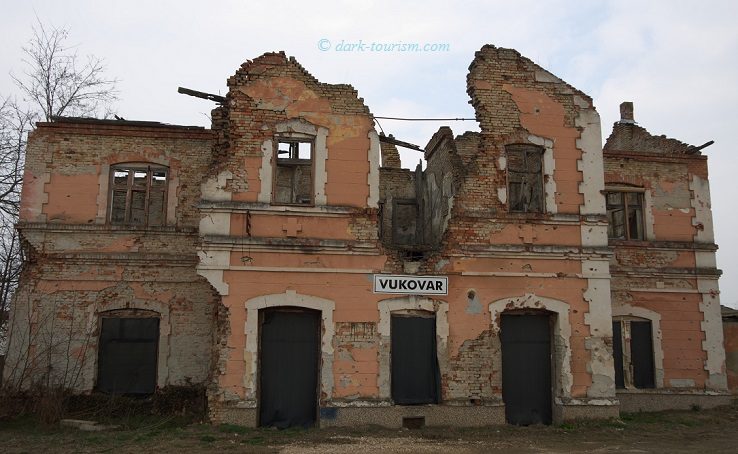| |
|
| ||
|
| |
Balkan belligerents, an underground airbase, and musings about Covid-19 memorialization Hello again subscribers! And welcome to all those who’ve joined since last time! This past week saw only two new Blog entries, but both rather substantial ones. On Thursday the post marked the anniversary day in history when both Slovenia and Croatia declared their independence 29 years ago in 1991. And with that the falling apart of former Yugoslavia entered its next, more brutal stage … and soon brought full-on war back to the middle of Europe for the first time since WWII. For Slovenia it was only a short, ten-day war, but in Croatia things turned rather nasty, with aerial attacks on the capital Zagreb and an 87-day siege of Vukovar and destructive battles in the far eastern province Slavonia, on the banks of the border river Danube. The ethnic tensions between Croats and Serbs had turned into bloodshed! Things soon got even nastier in Bosnia and Herzegovina. But in 1995 the war was more or less ended with the Dayton Accords. Yet Vukovar remained in Serbian hands for another two years, and was not returned to Croatia until 1997. Today Vukovar features a substantial memorial landscape that makes it a prime dark-tourism destination that is too often overlooked by international travellers, but shouldn’t be. The Blog post featured a few of those sites, such as one of the ruins still characterizing the place (the former train station – see photo above!), as well as two of the memorial complexes set up after the war. One of these also features a war machine of the sort utilized in the second aerial attack on Zagreb in 1995, this time by the Serbian Krajina paramilitaries and using self-propelled rocket launchers for firing missiles that showered the city with cluster bomblets (which constitutes a war crime). The Blog post also featured images of MiG-21 jet fighter planes that were used by the Yugoslav Air Force at the time – one showed an intact specimen on display in Belgrade, the other a mangled piece of wreckage of a shot-down MiG-21 on display at the Homeland War Museum in Karlovac. The next day, Friday 26th, I took these MiG references as a lead for a follow-up post about one of the most spectacular sights to behold in all of former Yugoslavia, especially for those who like it literally dark and spooky: the abandoned and ruined former underground airbase of Željava – inside tunnels drilled deep into a mountain, located on what is now the border between Croatia and Bosnia and Herzegovina. But the parts on the Croatian side can be visited, either on guided tours or also independently, for those intrepid enough and with a taste for urban exploration or “urbexing”. The tunnels were destroyed and burned out in the war but you can still explore them – provided you bring powerful torches and move about with care (more on that in this separate post on the Bohemian Blog). The pitch-black darkness and the mangled remains of the military installations inside (though sans any signs of the MiG21s that used to be stationed here) are a pretty unique thing to explore. And it was a “highlight” (in that totally dark sense, of course) of my whole Croatia trip back in 2018 and one of the best Cold-War-era relics to see in Europe. Rather than providing a long text (instead I just gave a short summary and referred readers elsewhere) I posted a set of 20 photos I had taken at Željava myself. So it was much more a visual post. Finally, something completely different, independent of my Blog and a link to outside content not written by me but by the director of the Institute for Dark Tourism Research, Philip Stone, for The Conversation. In this short article Stone attempts to put the current Covid-19 crisis into a dark-tourism context. He speculates about how dark tourism might help in commemorating this gigantic global tragedy, and adduces a couple of examples that indicate that this might already have begun on a small scale. It’s an interesting thought experiment – about in what way a pandemic of such epic proportions with so many repercussions all over the world can be memorialized when it is (hopefully, and hopefully soon) over. Comparing it with the Spanish flu of 1918, however, which is hardly commemorated in any form anywhere, suggests nothing at all may ever come of it. But could you imagine, just theoretically, in what ways the corona crisis could be memorialized? |
|
| |
|
| |||
|
